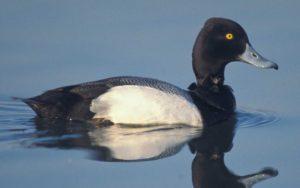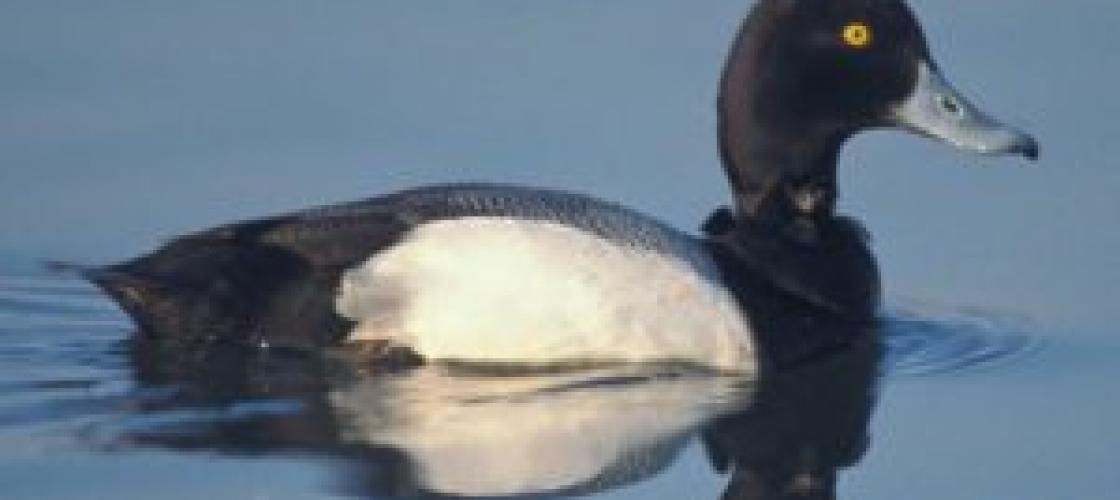Look around the Mississippi flyway this fall, and you may see the greater or lesser scaup ("SKOPP"). Scaups are diving ducks that can fully submerge and swim underwater for food. You will have a greater chance of seeing the lesser scaup, which is a common migrant in Missouri. The greater scaup prefers more coastal areas and is rarely seen in the state.
The lesser scaup prefers freshwater and can be seen in lakes, ponds, rivers and reservoirs. They are smaller than the greater scaup, with an angular or peaked head with a purple sheen.
To take flight, they flap their wings and run along the surface until they are airborne. They forage underwater for aquatic vegetation and insects, snails and crayfish. Lesser scaups are one of the most populous diving ducks in the country.
Duck Identification 101
Here's a quick guide to identifying some common ducks.
Mallard
Mallards, or "greenheads," are Missouri's most common duck. Hens have a loud quack; drakes give a lower-pitched kwek-kwek.
- Hen: blue speculum bordered with white, mottled brown body and an orange bill
- Drake: blue speculum bordered with white, iridescent green head, dark-brown breast
Northern Pintail
These slender ducks fly fast and often zigzag from great heights before leveling off to land. They may be seen in flocks with mallards. Drakes whistle; hens give a coarse quack.
- Hen: long, pointed wings
- Drake: long, slender white neck and a pointed tail
American Wigeon
The green eyestripe and white belly and shoulder patch helps identify wigeon drakes. Hens are generally brown. Both sexes have stubby bills and slightly pointed tails.
- Hen: slightly pointed tail and stubby bill
- Drake: green eyestripe, white shoulder patch
Wood Duck
The drake wood duck is Missouri's most colorful duck. While flying, their wings make a rustling, swishing sound. Drakes call hoo-w-ett, often in flight; hens give a wailing cr-r-ekk when frightened.
- Drake: long square tail and a blocky head
Green-winged Teal
Green-winged teal are North America's smallest duck. Their size, rapid flight, and iridescent-green wing patches help identify these ducks.
- Drake: small size, iridescent-green speculum
Ring-necked Duck (Ringneck)
This diver can be confused with scaup and redheads. In flight, the dark wings of ringnecks are different from the white-edged wings of scaup. The bold white ring at the tip of the bill is usually conspicuous.
- Hen: bold white ring at tip of bill
- Drake: dark wings without white edges, black head
Greater and Lesser Scaup
Except for the wings, greater and lesser scaup appear almost identical in the field. The white band near the trailing edges of the wings runs almost to the wing tip in greater scaup, but only halfway in the lesser. Do not confuse scaup with the similar-looking ring-necked duck.
- Hen: white at the base of the bill
- Drake: white-edged wing, black head
Find out more about ducks with the MDC Field Guide.


Recent Posts
























